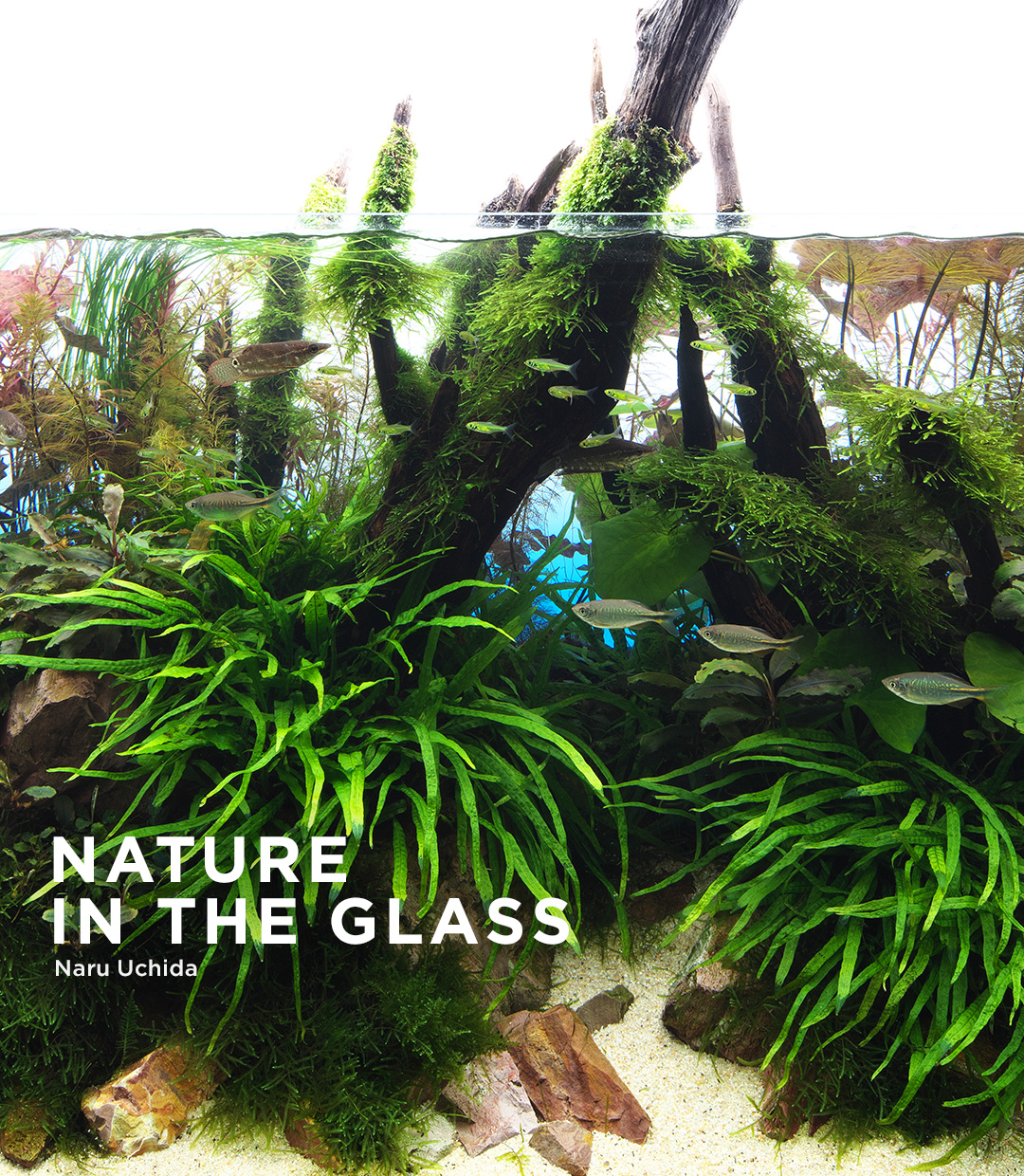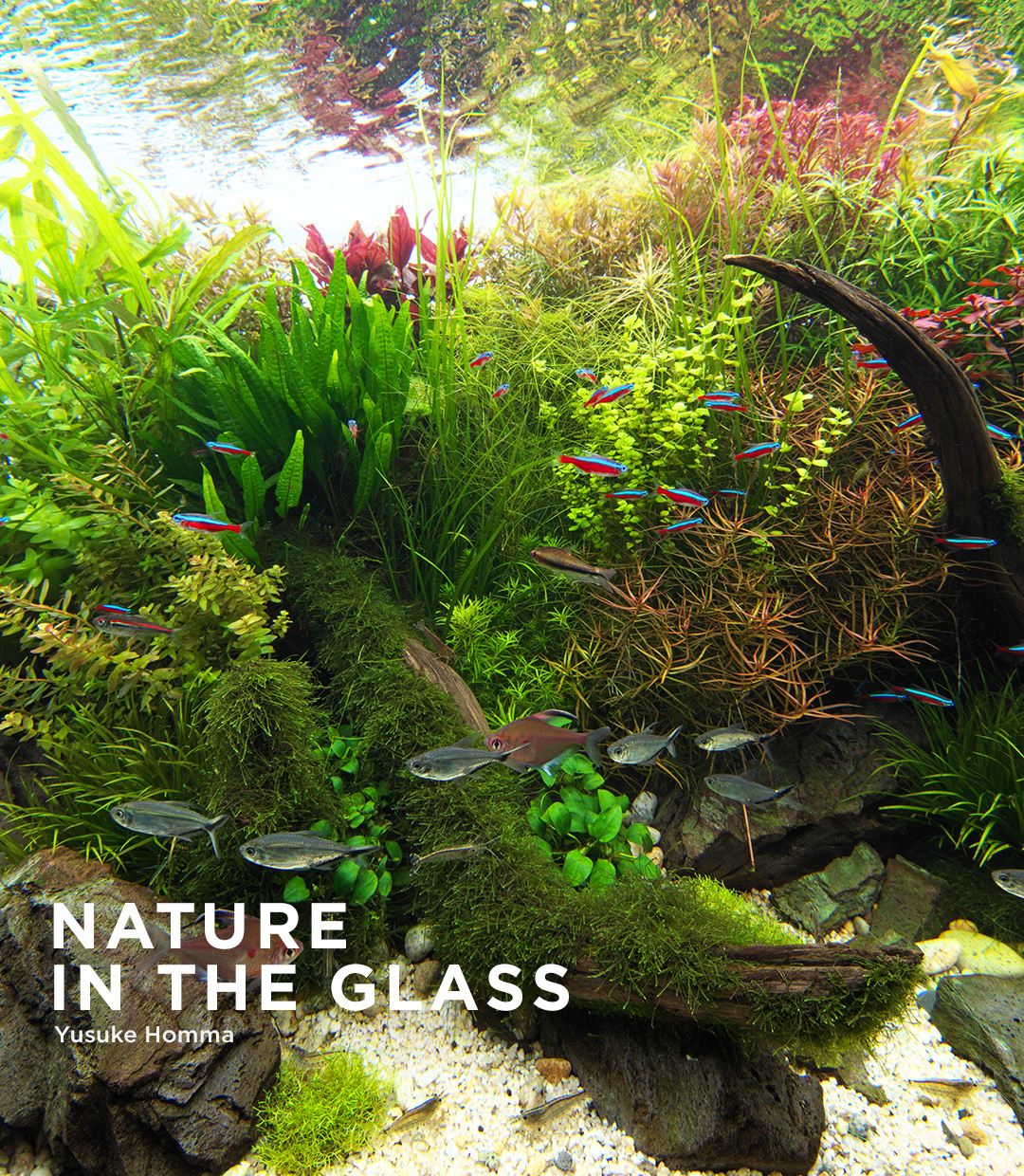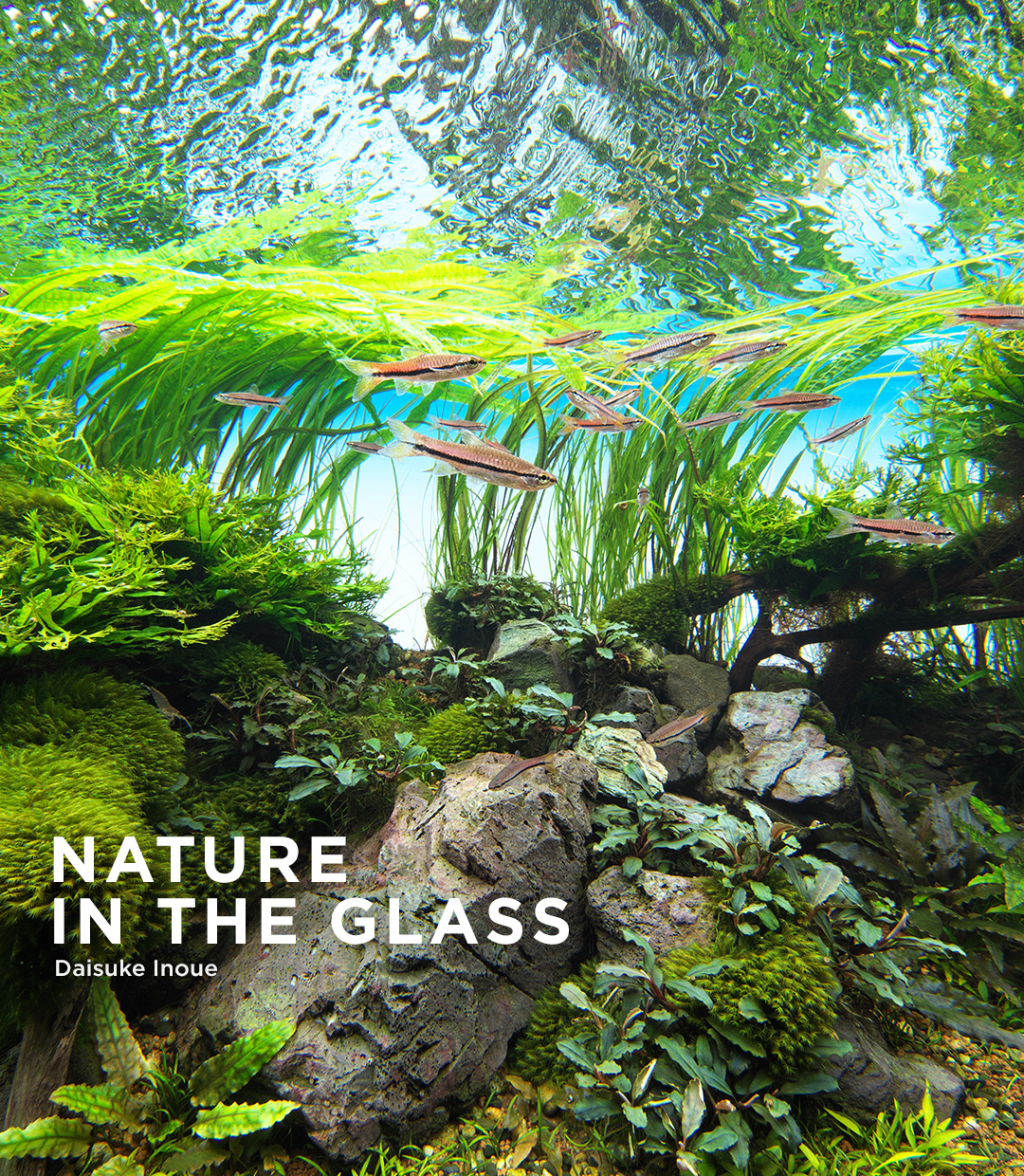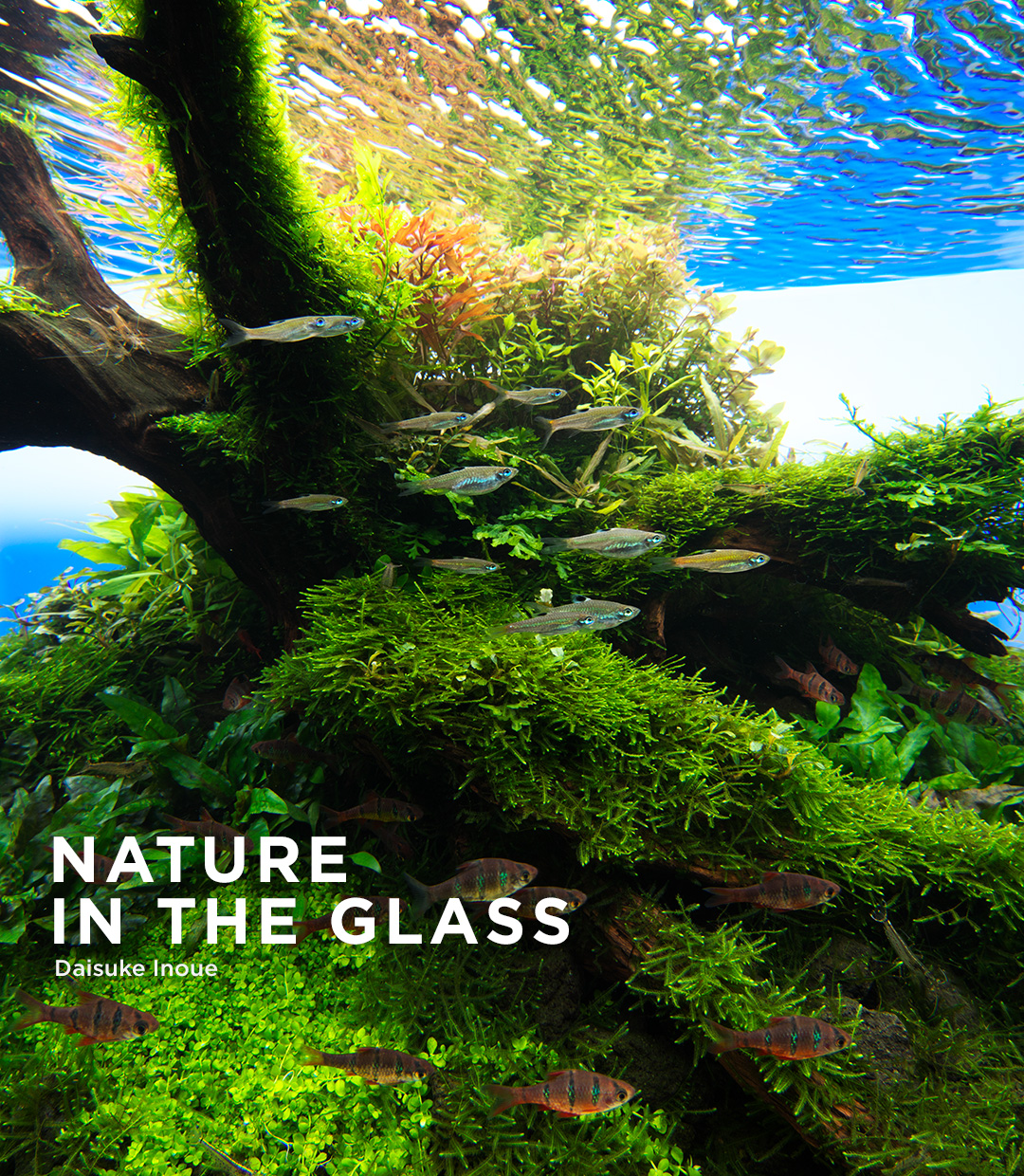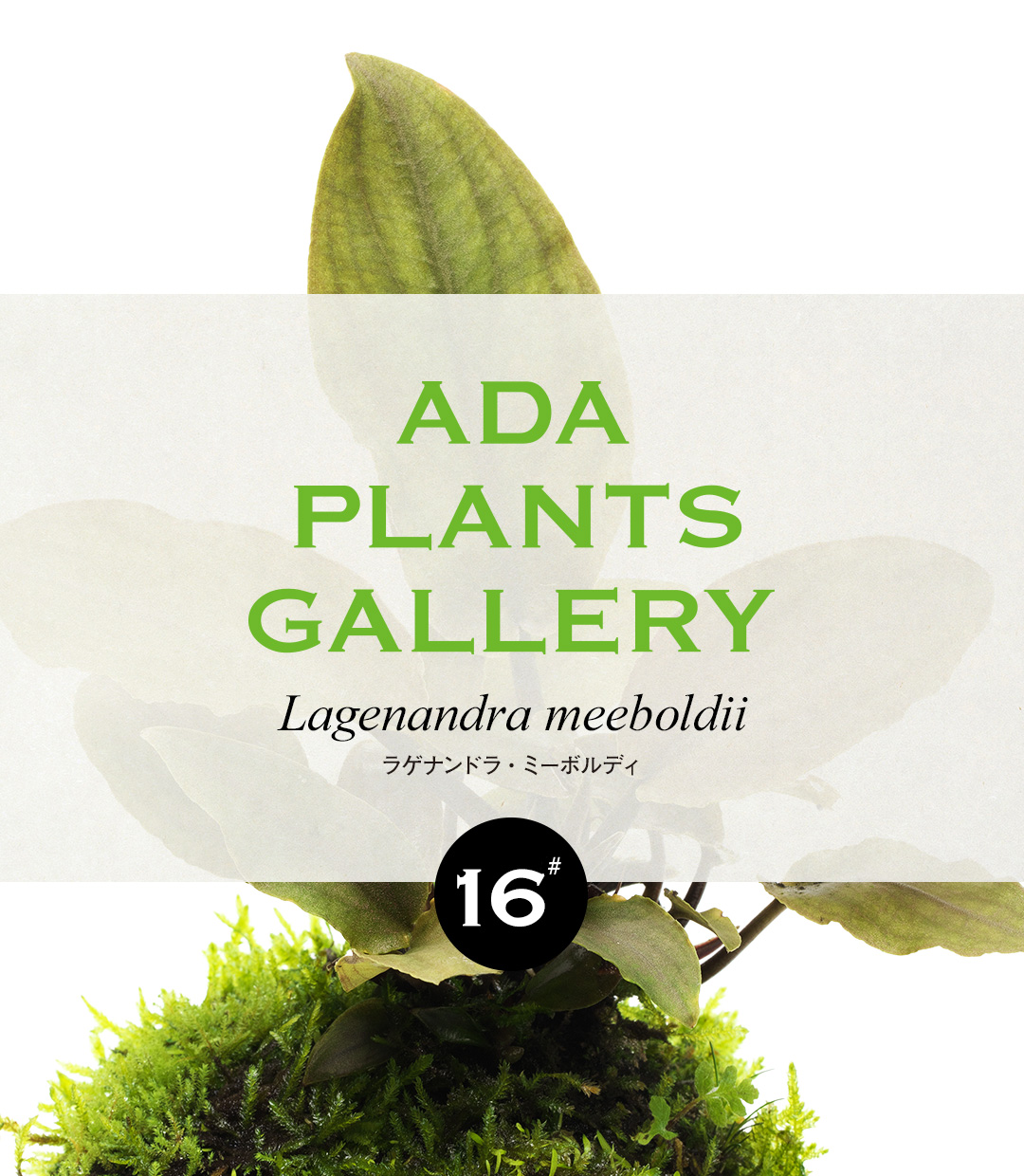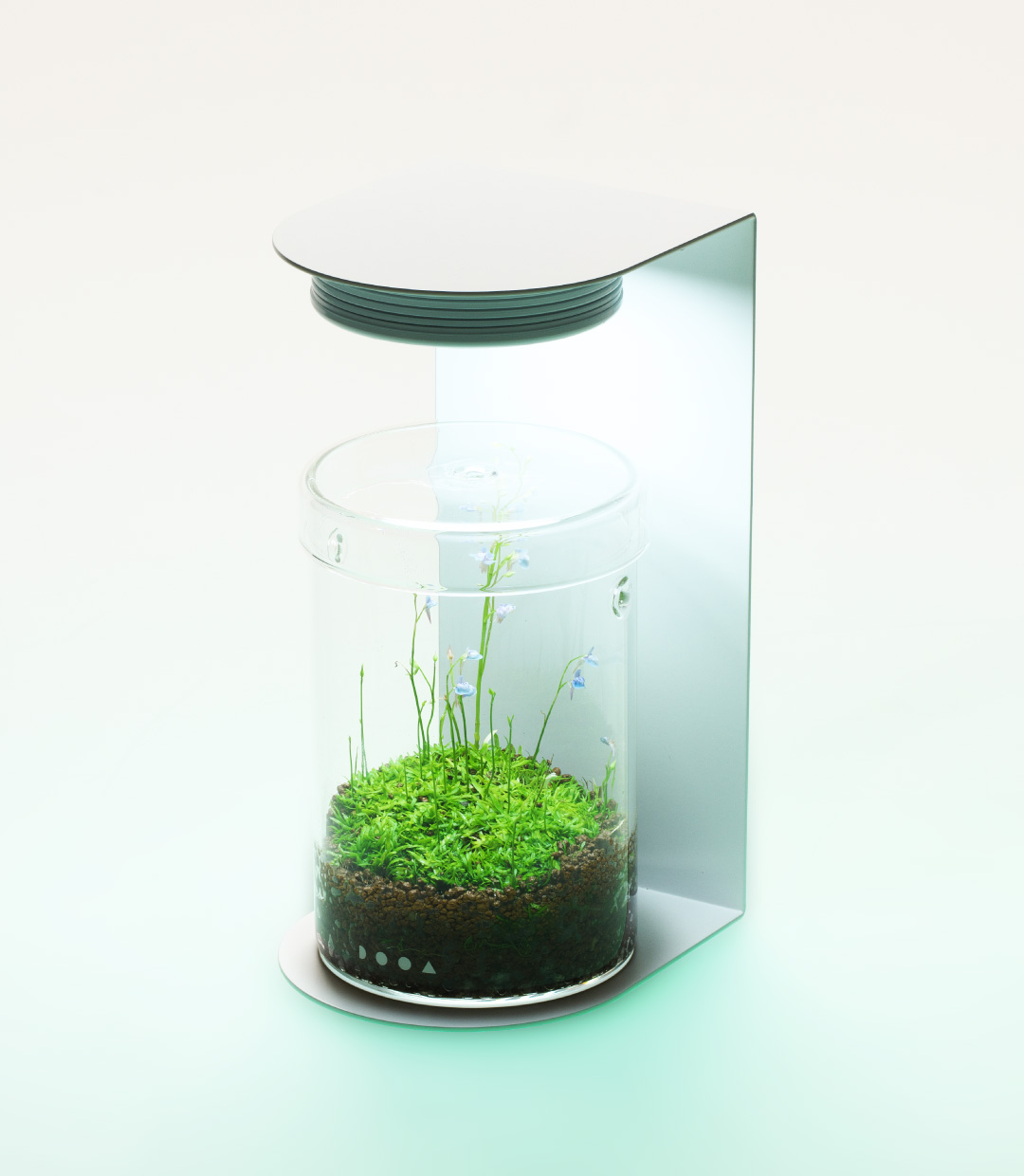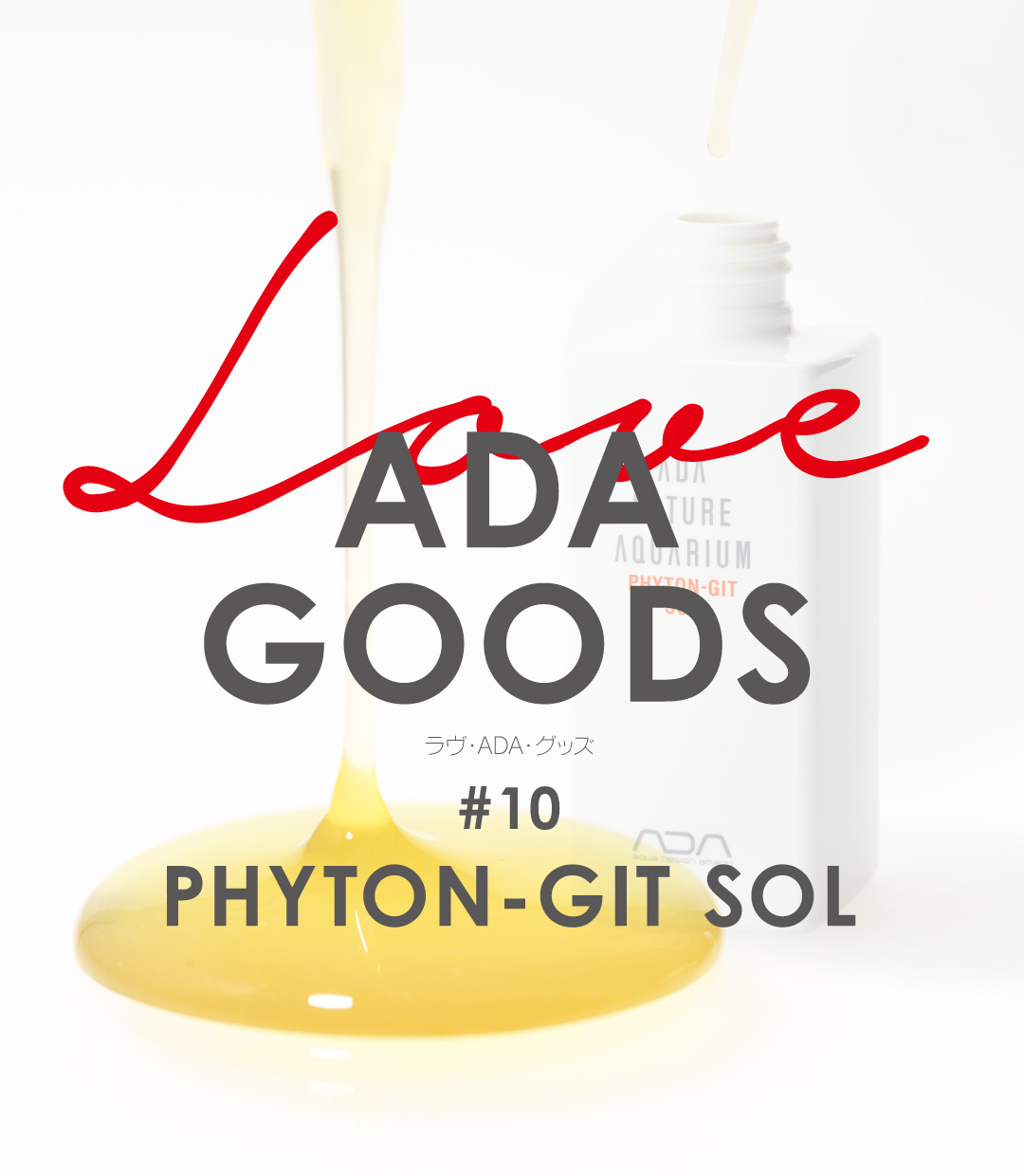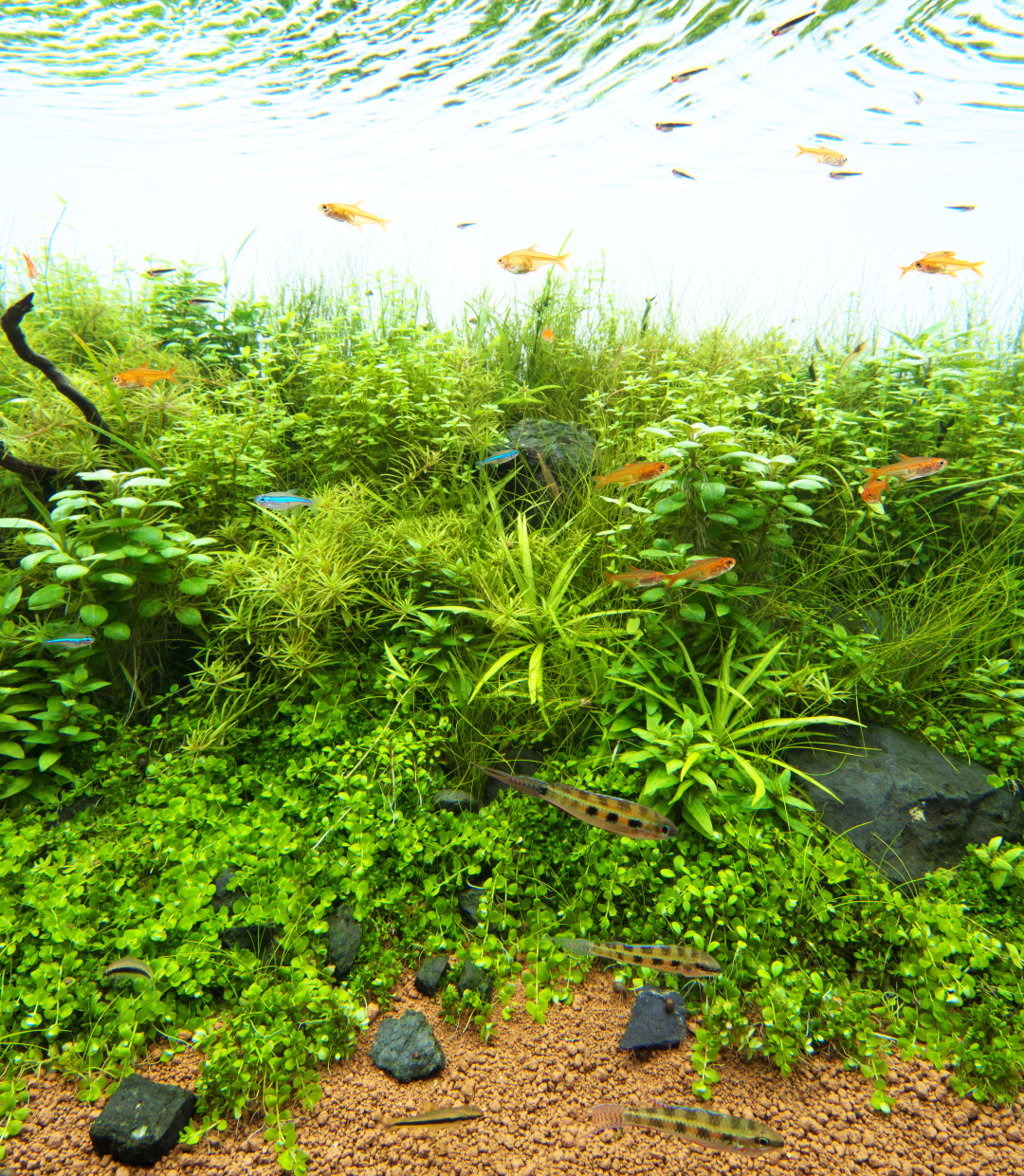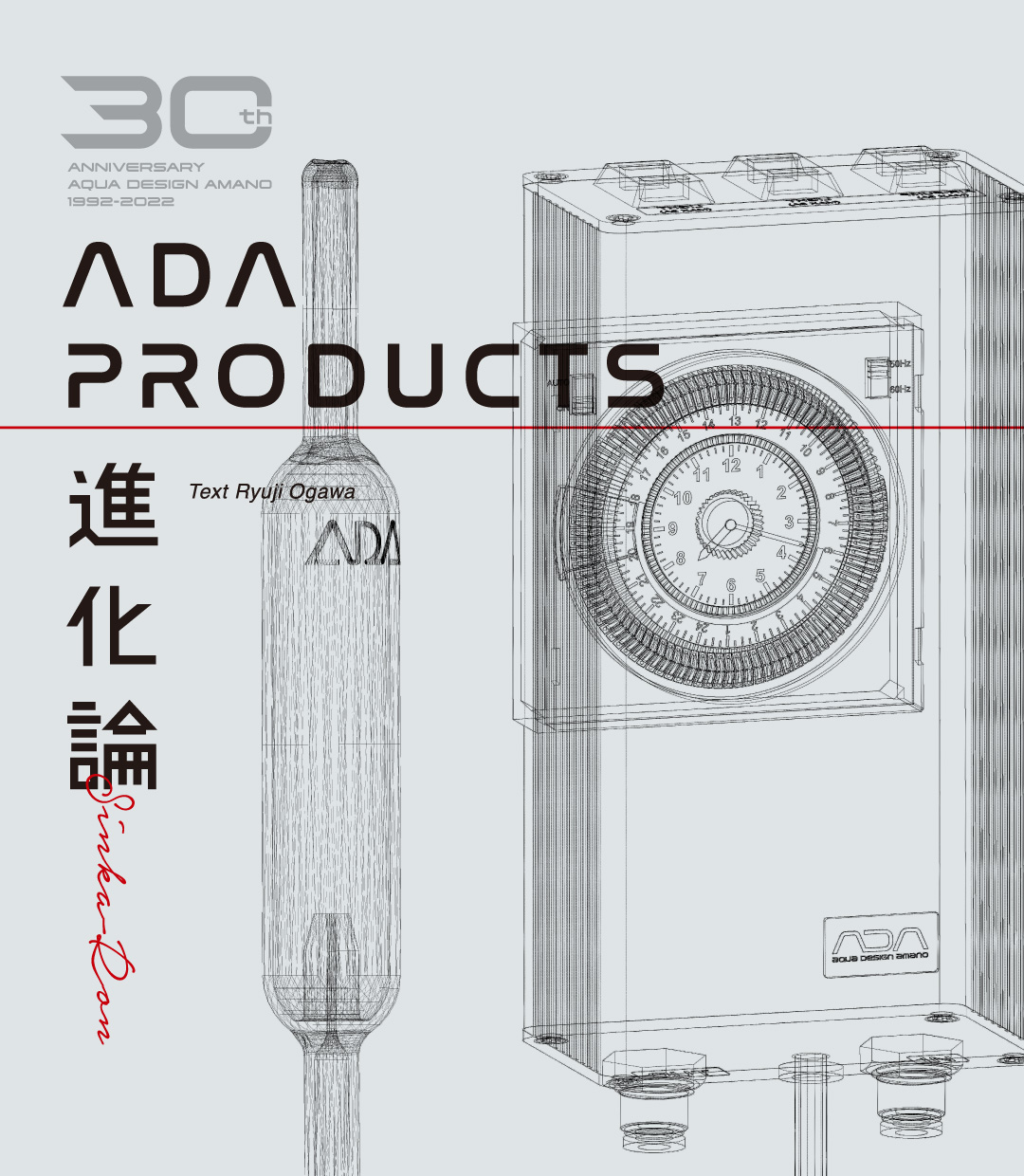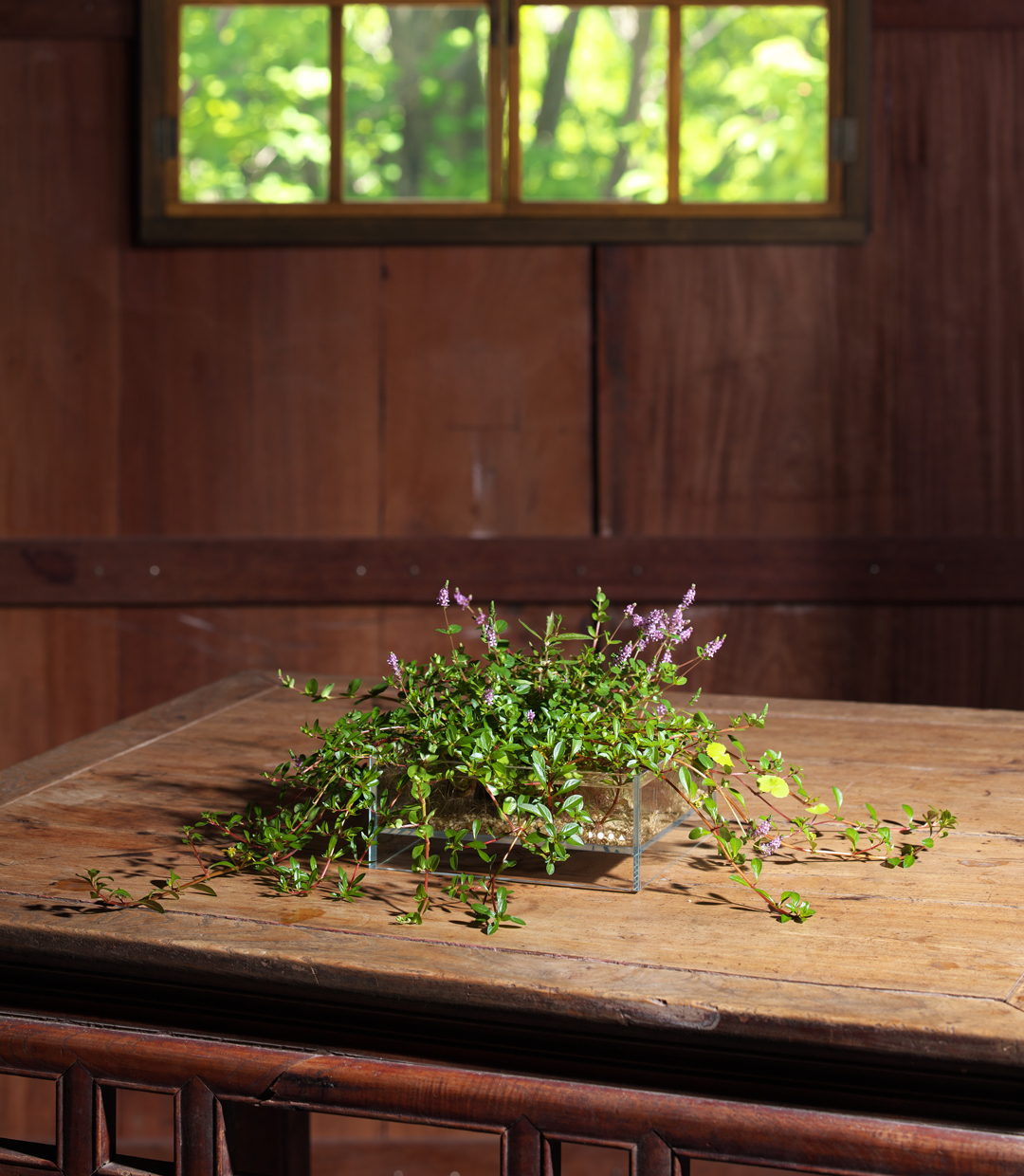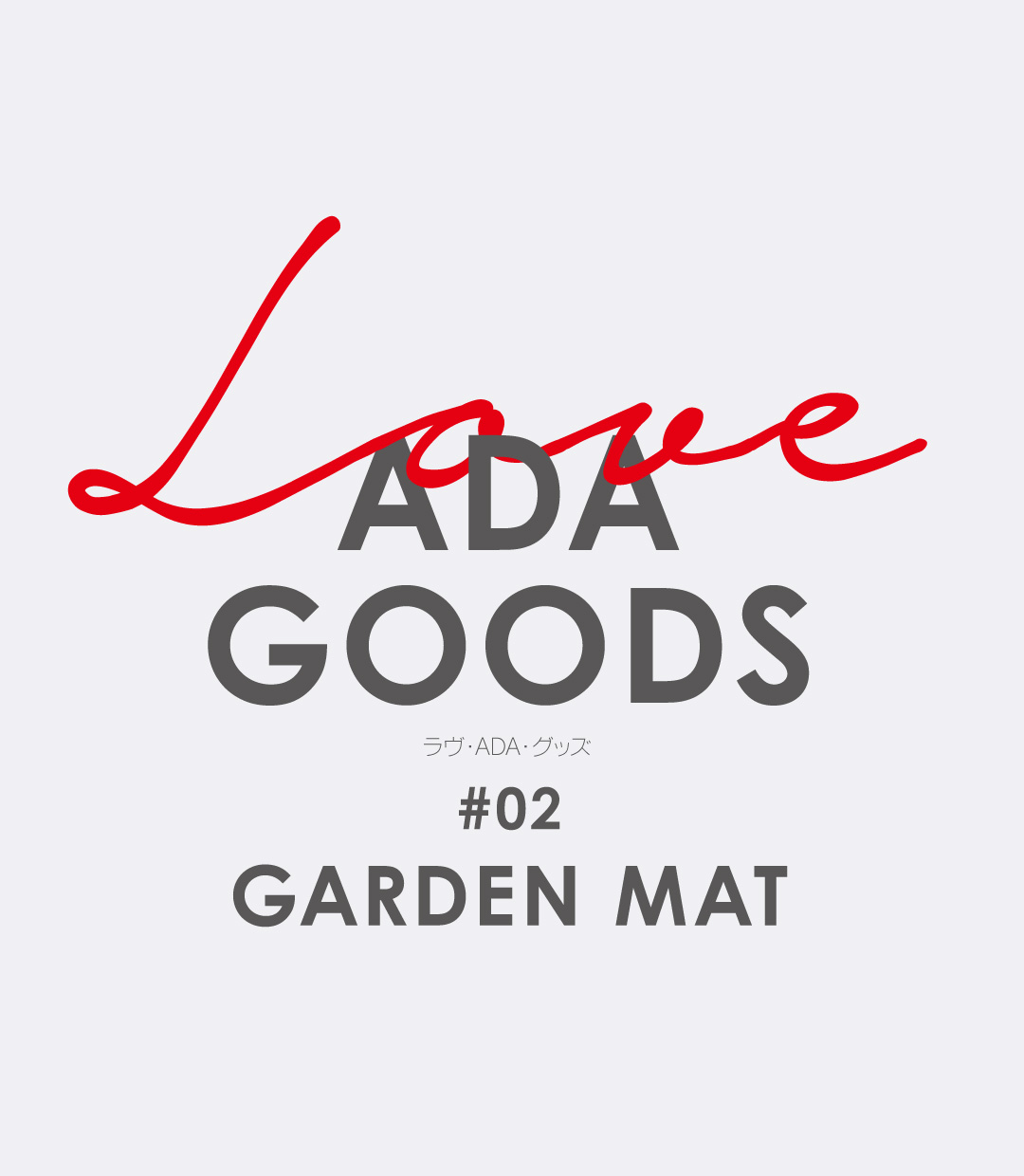NATURE IN THE GLASS “World Tree”
[World Tree]
This aquascape was approached with two themes: the inheritance of the Nature Aquarium and my own expressiveness. As the aquascape was being completed when aquatic plants thrived, I was conscious of the planting arrangement so that I could enjoy the process of the environment being created by living creatures. The stable composition covered by the growing aquatic plants evokes a strong life force of sprouting and budding. Although the layout is modeled after a Nature Aquarium, I believe it is a good study for acquiring an original expression.
This aquascape was approached with two themes: the inheritance of the Nature Aquarium and my own expressiveness. As the aquascape was being completed when aquatic plants thrived, I was conscious of the planting arrangement so that I could enjoy the process of the environment being created by living creatures. The stable composition covered by the growing aquatic plants evokes a strong life force of sprouting and budding. Although the layout is modeled after a Nature Aquarium, I believe it is a good study for acquiring an original expression.
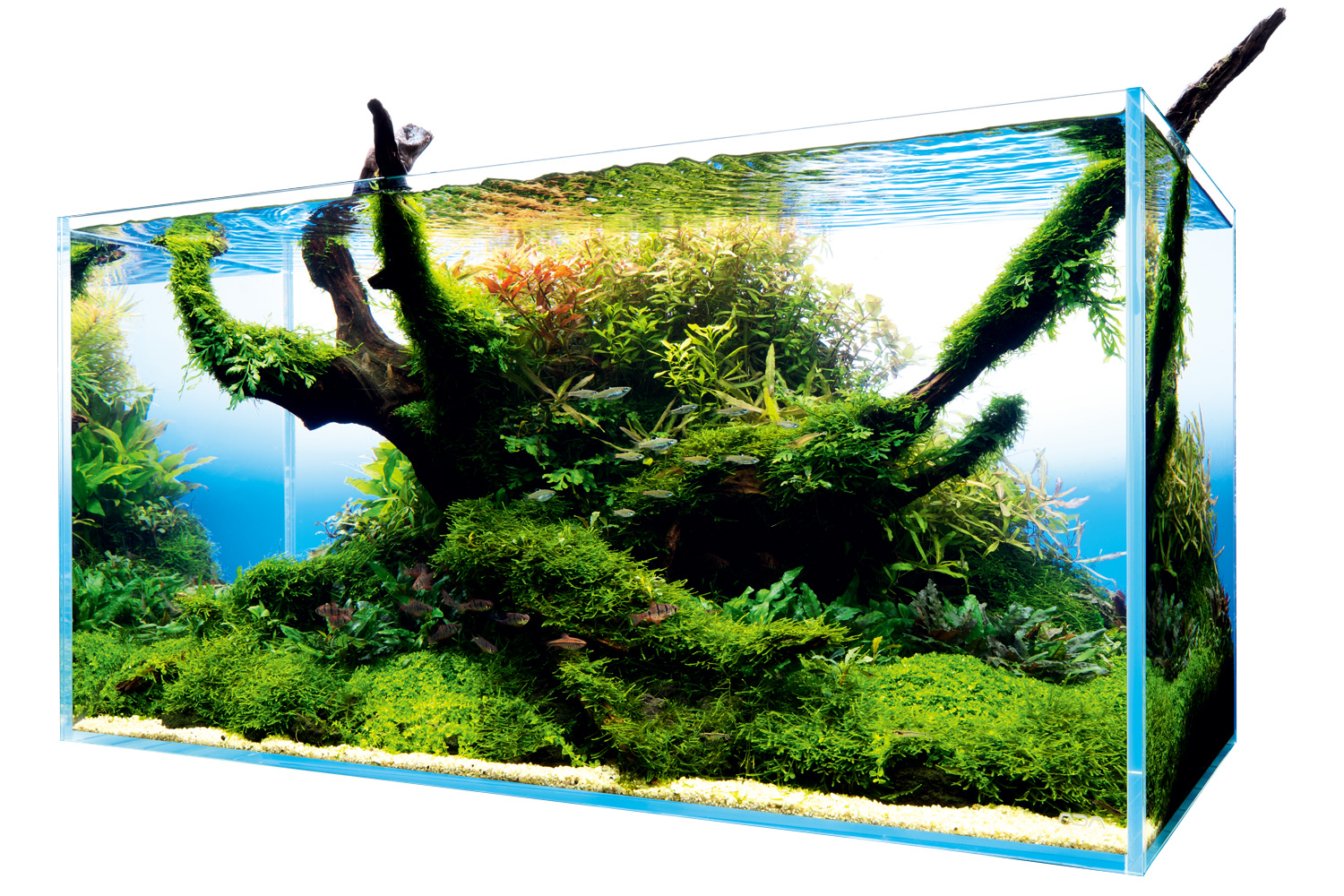
DATA
Photo taken on: November 28, 2018 (ADA)
Creator: Daisuke Inoue (layout production, text)
Aquarium: Cube Garden W90 x D45 x H45 (cm)
Lighting: Solar RGB x 1 (8.5 hours per day)
Filtration: Super Jet Filter ES-600 (Bio Rio)
Materials: Horn Wood, Sansui Stone
Substrate: Aqua Soil-Amazonia, Power Sand Advance M, Bacter 100, Clear Super, Tourmaline BC, Tropical River Sand
CO2: CO2 Pollen Glass Large 30Ø, 4 bubbles per second via CO2 Beetle Counter (using Tower)
Aeration: 15.5 hours after the light is turned off with Lily Pipe P-4
Additives: Brighty K, Green Brighty Mineral, Green Brighty Iron, Green Brighty Nitrogen
Water change: 1/2 once a week
Water quality: Temperature 25°C, pH: 6.2, TH: 50 mg/L
Plants
Rotala macrandra ‘Green’
Rotala macrandra ‘Simona’
Ludwigia glandulosa
Ludwigia inclinata var. verticillata ‘Cuba’
Hygrophila polysperma
Hygrophila sp. ‘Tiger’
Hygrophila corymbosa ‘Compact’
Cryptocoryne wendtii ‘Green’ (BIO)*
Cryptocoryne wendtii ‘Tropica’ (BIO)*
Micranthemum sp. (BIO)*
Bolbitis heudelotii
Anubias barteri var. nana ‘Petite’
Bucephalandra sp. ‘Brownie Purple’
Taxiphyllum barbieri (Moss Bag)*
Fish and Invertebrates
Rasbora dorsiocellata macrophthalma
Puntius titteya
Puntius pentazona johorensis
Crossocheilus oblongus
Otocinclus sp.
Caridina multidentate
* means that they are from ADA’s living product lineups.
Photo taken on: November 28, 2018 (ADA)
Creator: Daisuke Inoue (layout production, text)
Aquarium: Cube Garden W90 x D45 x H45 (cm)
Lighting: Solar RGB x 1 (8.5 hours per day)
Filtration: Super Jet Filter ES-600 (Bio Rio)
Materials: Horn Wood, Sansui Stone
Substrate: Aqua Soil-Amazonia, Power Sand Advance M, Bacter 100, Clear Super, Tourmaline BC, Tropical River Sand
CO2: CO2 Pollen Glass Large 30Ø, 4 bubbles per second via CO2 Beetle Counter (using Tower)
Aeration: 15.5 hours after the light is turned off with Lily Pipe P-4
Additives: Brighty K, Green Brighty Mineral, Green Brighty Iron, Green Brighty Nitrogen
Water change: 1/2 once a week
Water quality: Temperature 25°C, pH: 6.2, TH: 50 mg/L
Plants
Rotala macrandra ‘Green’
Rotala macrandra ‘Simona’
Ludwigia glandulosa
Ludwigia inclinata var. verticillata ‘Cuba’
Hygrophila polysperma
Hygrophila sp. ‘Tiger’
Hygrophila corymbosa ‘Compact’
Cryptocoryne wendtii ‘Green’ (BIO)*
Cryptocoryne wendtii ‘Tropica’ (BIO)*
Micranthemum sp. (BIO)*
Bolbitis heudelotii
Anubias barteri var. nana ‘Petite’
Bucephalandra sp. ‘Brownie Purple’
Taxiphyllum barbieri (Moss Bag)*
Fish and Invertebrates
Rasbora dorsiocellata macrophthalma
Puntius titteya
Puntius pentazona johorensis
Crossocheilus oblongus
Otocinclus sp.
Caridina multidentate
* means that they are from ADA’s living product lineups.
Convex Layout coming alive with the growth of aquatic plants by making use of the clever stone arrangement
This layout is a basic convex layout created with Horn Wood pieces, but a stone wall is intentionally built with many Sansui Stones as its foundation. This is intended to emphasize the undergrowth and shadows in the middle ground, which will become even more pronounced as the aquatic plants grow. The stem plants not only stand out and add beauty to the pure green undergrowth and Taxiphyllum barbieri, but also accentuate and balance the aquascape by nurturing the expression of details and the depth of shadows.
This layout is a basic convex layout created with Horn Wood pieces, but a stone wall is intentionally built with many Sansui Stones as its foundation. This is intended to emphasize the undergrowth and shadows in the middle ground, which will become even more pronounced as the aquatic plants grow. The stem plants not only stand out and add beauty to the pure green undergrowth and Taxiphyllum barbieri, but also accentuate and balance the aquascape by nurturing the expression of details and the depth of shadows.
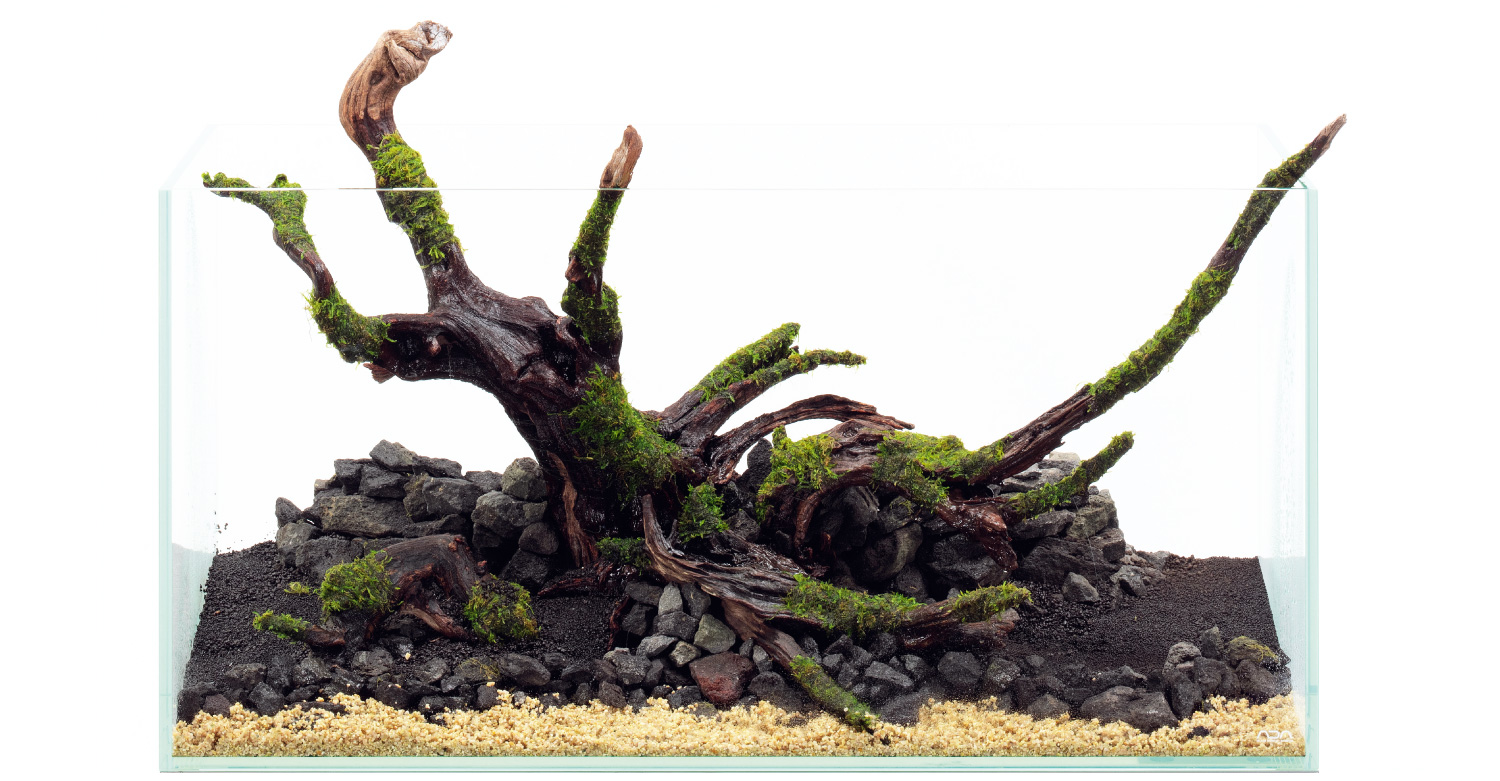
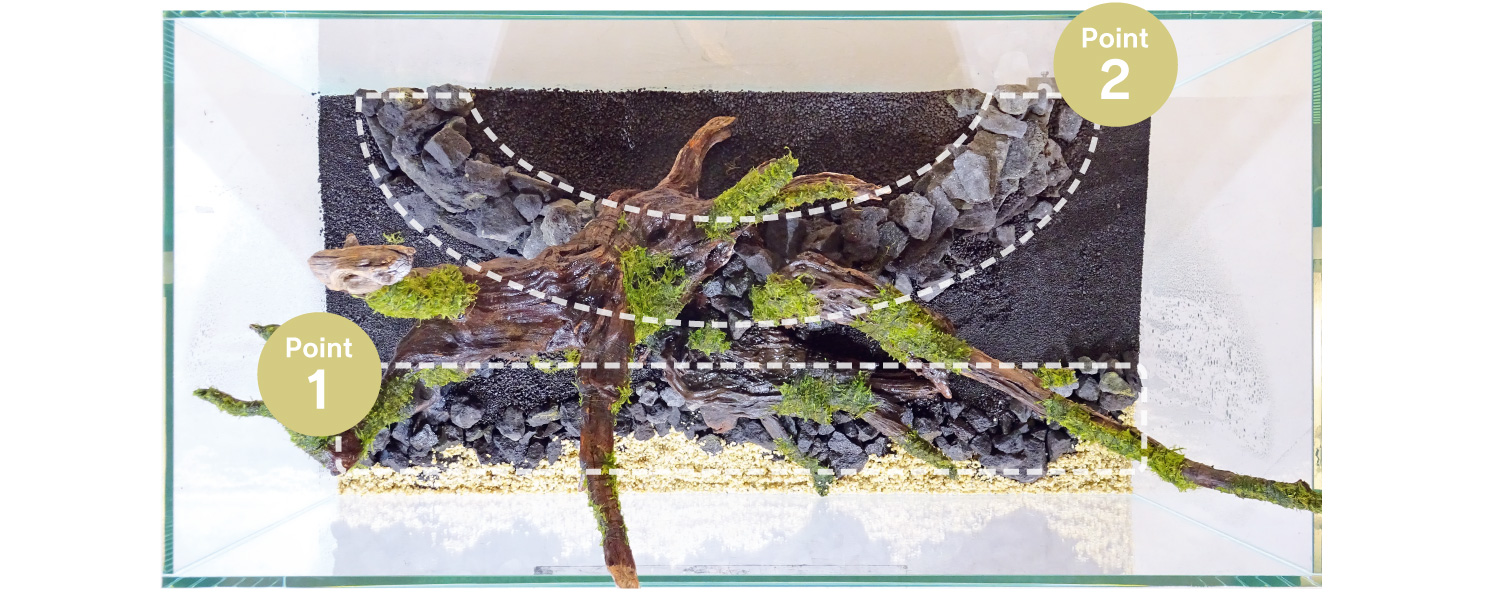
The stone wall was created for earth retaining and shading in the planting area from the undergrowth to middle ground plants as well as the background.
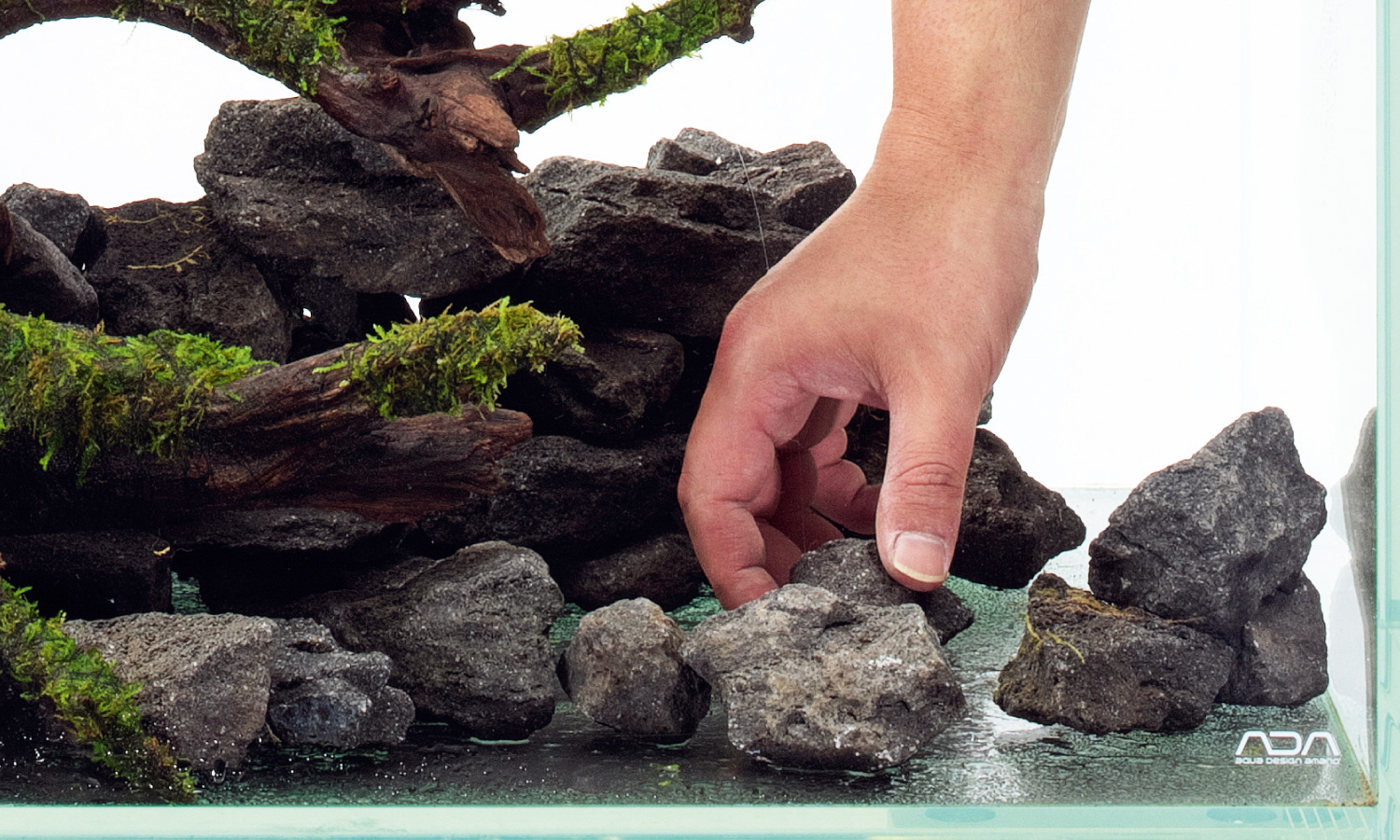
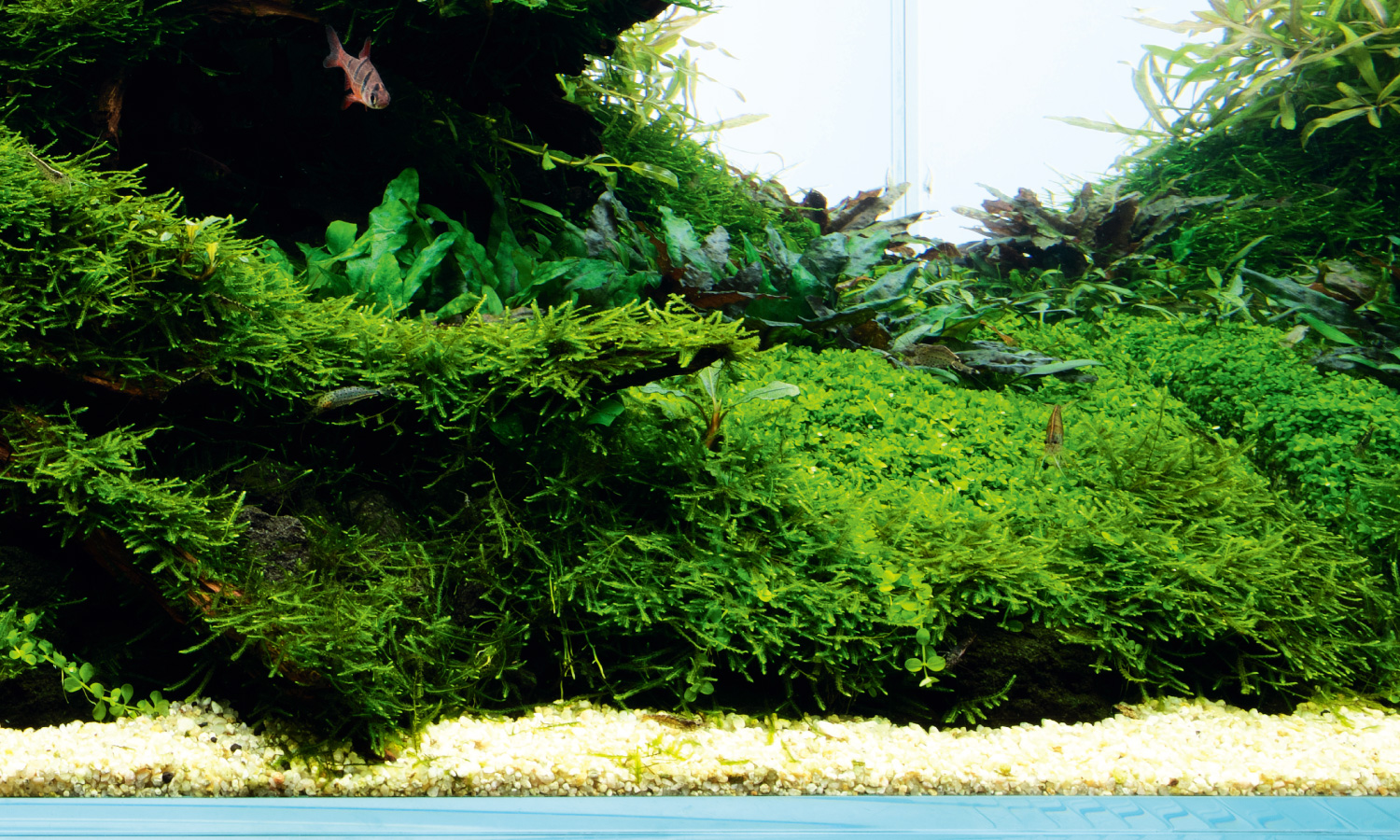
Point 1 Stone wall in the foreground
Creating natural undulations in the undergrowth
The undergrowth planted on the stone wall gradually grew to cover the stones over time. Rather than creating a flat area with some substrate, a slight difference in height was created between the undergrowth. Also, the border with the Cryptocoryne at the back is faded, creating a naturally mixed atmosphere.
Creating natural undulations in the undergrowth
The undergrowth planted on the stone wall gradually grew to cover the stones over time. Rather than creating a flat area with some substrate, a slight difference in height was created between the undergrowth. Also, the border with the Cryptocoryne at the back is faded, creating a naturally mixed atmosphere.
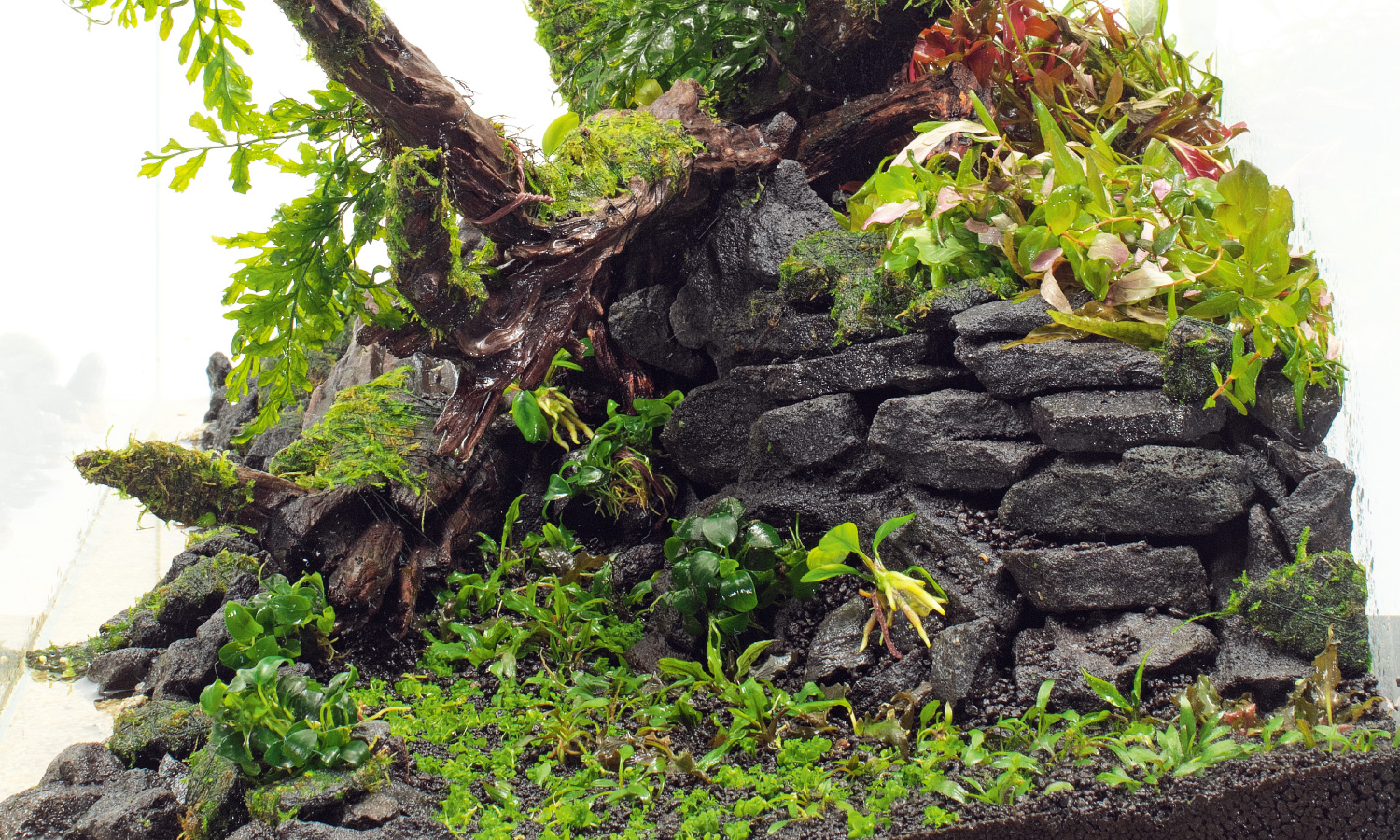
It also serves as an earth retaining structure for planting aquatic plants high up behind the driftwood.
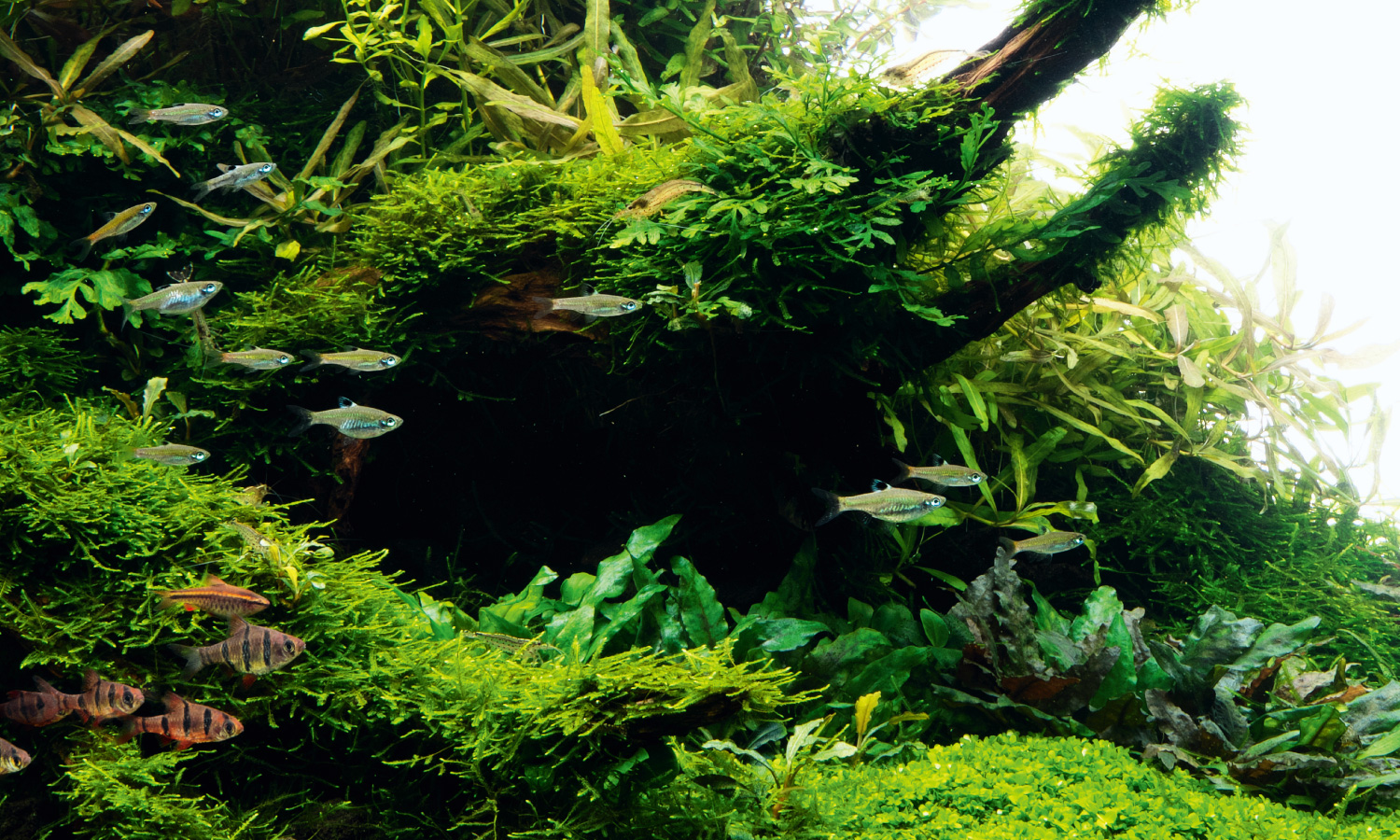
Point 2 Stone wall in the background
Emphasizing the shadows that are difficult to express with aquatic plants.
In Nature Aquariums, shadows are intentionally created to create a three-dimensional effect. In this case, the shadows were emphasized by placing stones in the shape of an arch at the base of the driftwood. The shadows were deepened by planting shade-tolerant Cryptocoryne.
Emphasizing the shadows that are difficult to express with aquatic plants.
In Nature Aquariums, shadows are intentionally created to create a three-dimensional effect. In this case, the shadows were emphasized by placing stones in the shape of an arch at the base of the driftwood. The shadows were deepened by planting shade-tolerant Cryptocoryne.
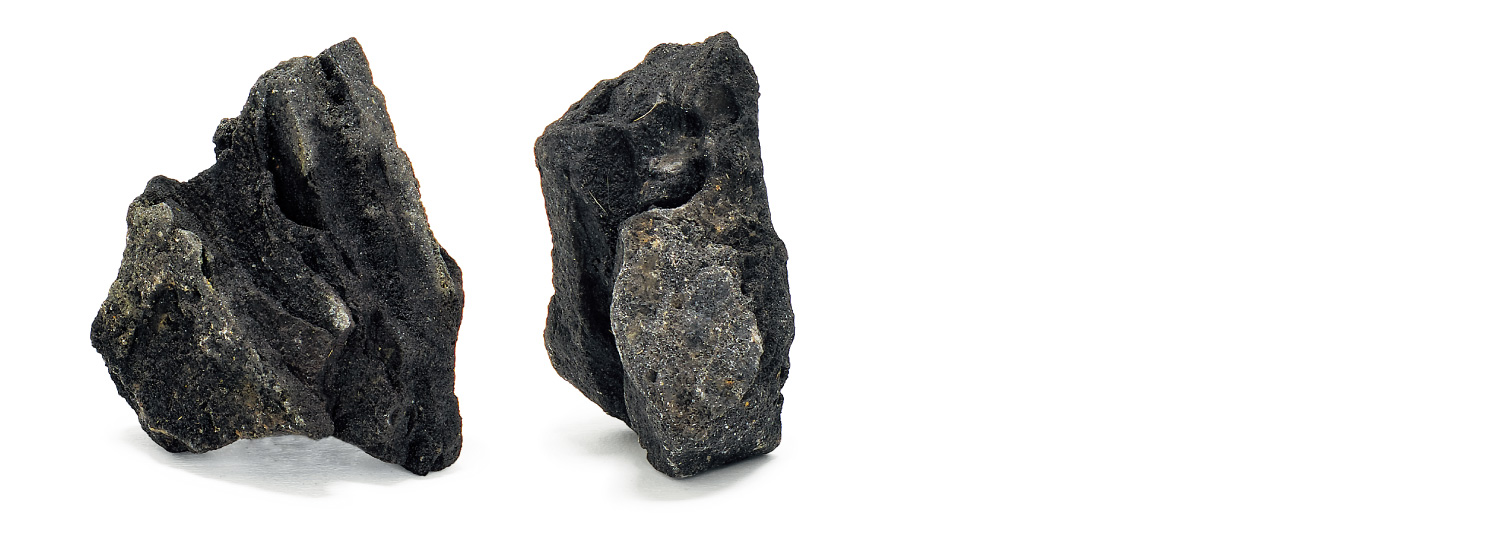
The shape is more natural because the cracks are layered, reminding of landscapes depicted in Japanese Sansui paintings. The moderately rough surface also makes it difficult to collapse when stacked, making it suitable for use in a variety of layouts.
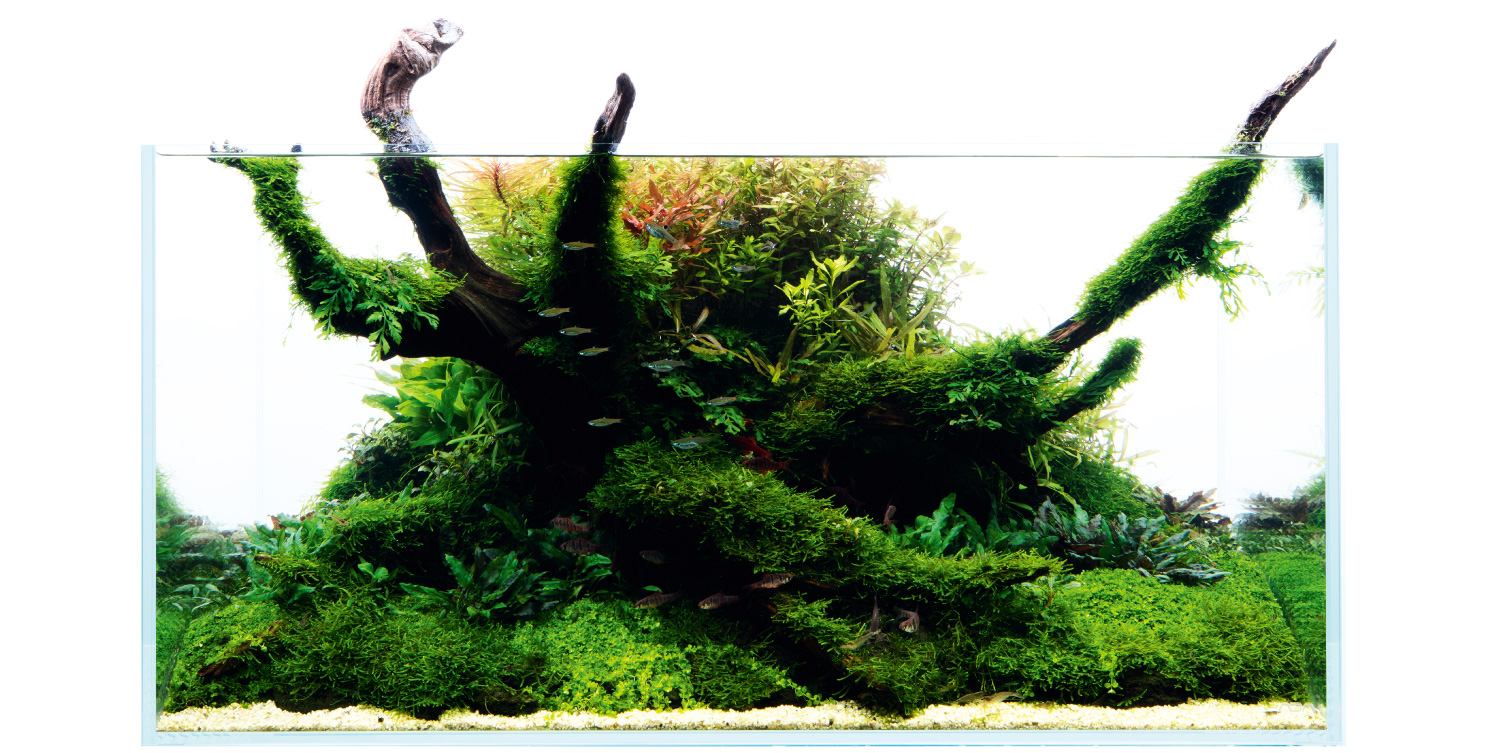
The subdued green tones of Taxiphyllum barbieri are well-matched with the warm red and yellow tones of the stem plants. The result is an aquascape with a nostalgic feel.
Photo taken on November 28, 2018.
![[ STYLE OF EPIPHYTIC PLANTS ] Effective use of epiphytic aquatic plants in layout scenes](https://www.adana.co.jp/wp-content/uploads/sites/3/2024/04/ep_img_ogp.jpg)
